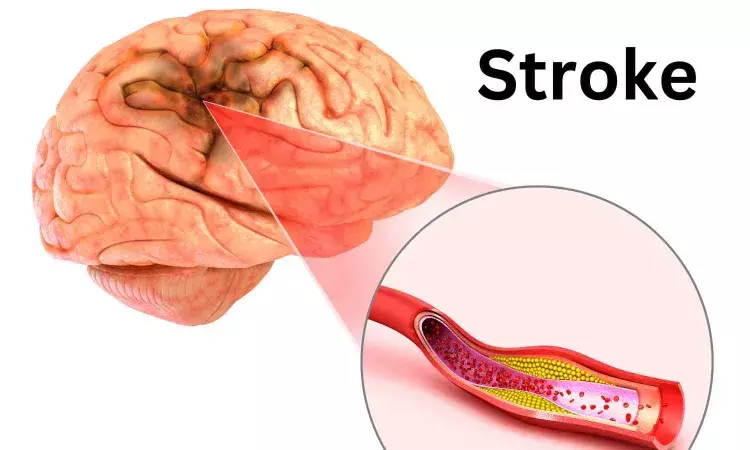- Home
- Medical news & Guidelines
- Anesthesiology
- Cardiology and CTVS
- Critical Care
- Dentistry
- Dermatology
- Diabetes and Endocrinology
- ENT
- Gastroenterology
- Medicine
- Nephrology
- Neurology
- Obstretics-Gynaecology
- Oncology
- Ophthalmology
- Orthopaedics
- Pediatrics-Neonatology
- Psychiatry
- Pulmonology
- Radiology
- Surgery
- Urology
- Laboratory Medicine
- Diet
- Nursing
- Paramedical
- Physiotherapy
- Health news
- Fact Check
- Bone Health Fact Check
- Brain Health Fact Check
- Cancer Related Fact Check
- Child Care Fact Check
- Dental and oral health fact check
- Diabetes and metabolic health fact check
- Diet and Nutrition Fact Check
- Eye and ENT Care Fact Check
- Fitness fact check
- Gut health fact check
- Heart health fact check
- Kidney health fact check
- Medical education fact check
- Men's health fact check
- Respiratory fact check
- Skin and hair care fact check
- Vaccine and Immunization fact check
- Women's health fact check
- AYUSH
- State News
- Andaman and Nicobar Islands
- Andhra Pradesh
- Arunachal Pradesh
- Assam
- Bihar
- Chandigarh
- Chattisgarh
- Dadra and Nagar Haveli
- Daman and Diu
- Delhi
- Goa
- Gujarat
- Haryana
- Himachal Pradesh
- Jammu & Kashmir
- Jharkhand
- Karnataka
- Kerala
- Ladakh
- Lakshadweep
- Madhya Pradesh
- Maharashtra
- Manipur
- Meghalaya
- Mizoram
- Nagaland
- Odisha
- Puducherry
- Punjab
- Rajasthan
- Sikkim
- Tamil Nadu
- Telangana
- Tripura
- Uttar Pradesh
- Uttrakhand
- West Bengal
- Medical Education
- Industry
Higher income reduces stroke mortality risk by a third, new study shows

New research, presented at the 10th European Stroke Organisation Conference (ESOC) 2024, has revealed that high-income individuals have a 32% lower risk of post-stroke mortality. Additionally, those with a higher education have a 26% lower risk of death post-stroke, highlighting striking disparities in stroke survival based on key social determinants of health (SDoH).
The register-based study analysed data from 6,901 stroke patients in Gothenburg, Sweden between November 2014 to December 2019 to examine the impact of SDoH factors on post-stroke mortality risk. The study focused on four SDoH factors: living area, country of birth, education and income.
As well as identifying a significant connection between income, education level and post-stroke mortality risk, the study uncovered a concerning trend regarding the cumulative impact of SDoH factors. Patients with one unfavourable SDoH factor faced an 18% higher risk of mortality compared to patients without any unfavourable SDoH factors. This risk escalated to 24% for patients with two to four SDoH factors.
Lead author Professor Katharina Stibrant Sunnerhagen, University of Gothenburg, Clinical Neuroscience, Gothenburg, Sweden, comments, “Our findings underscore a stark reality - an individual’s socioeconomic status can be a matter of life or death in the context of stroke, especially when they are confronted with multiple unfavourable SDoH factors. While our study was conducted in Gothenburg, we believe these insights resonate across Europe, where similar healthcare structures and levels of social vulnerability exist, highlighting a pervasive issue throughout the continent.”
The study also found a link between increased mortality risk and additional risk factors like physical inactivity, diabetes, alcohol abuse and atrial fibrillation.
Notably, insights emerged regarding gender disparities and the potential impact of risk factors when examining patient characteristics within the study cohort. The proportion of female patients increased with the number of unfavourable SDoH factors; 41% of the group with no unfavourable SDoH factors were female, whereas 59% of the group with two to four unfavourable SDoH factors comprised females. Additionally, smoking, whether current or within the past year, was more prevalent in the group with two to four unfavourable SDoH factors compared to those with none (19% versus 12%).
Commenting on the actions required to reduce the future stroke burden, Professor Stibrant Sunnerhagen explains, “As the number of people affected by stroke in Europe is projected to rise by 27% between 2017 and 2047, the need for effective interventions is more pressing than ever.2 In light of our study’s findings, targeted strategies are essential. Policymakers, for instance, must tailor legislation and approaches to account for the specific circumstances and needs of diverse communities, while clinicians should consider identifying patients with unfavourable SDoH factors to prevent post-stroke mortality.”
“By addressing these disparities, we will not only support the principles of health equity, but also have the potential to significantly enhance public health outcomes.”
Reference:
Higher income reduces stroke mortality risk by a third, new study shows, Beyond, Meeting: European Stroke Organisation Conference (ESOC) 2024.
Dr Kamal Kant Kohli-MBBS, DTCD- a chest specialist with more than 30 years of practice and a flair for writing clinical articles, Dr Kamal Kant Kohli joined Medical Dialogues as a Chief Editor of Medical News. Besides writing articles, as an editor, he proofreads and verifies all the medical content published on Medical Dialogues including those coming from journals, studies,medical conferences,guidelines etc. Email: drkohli@medicaldialogues.in. Contact no. 011-43720751


